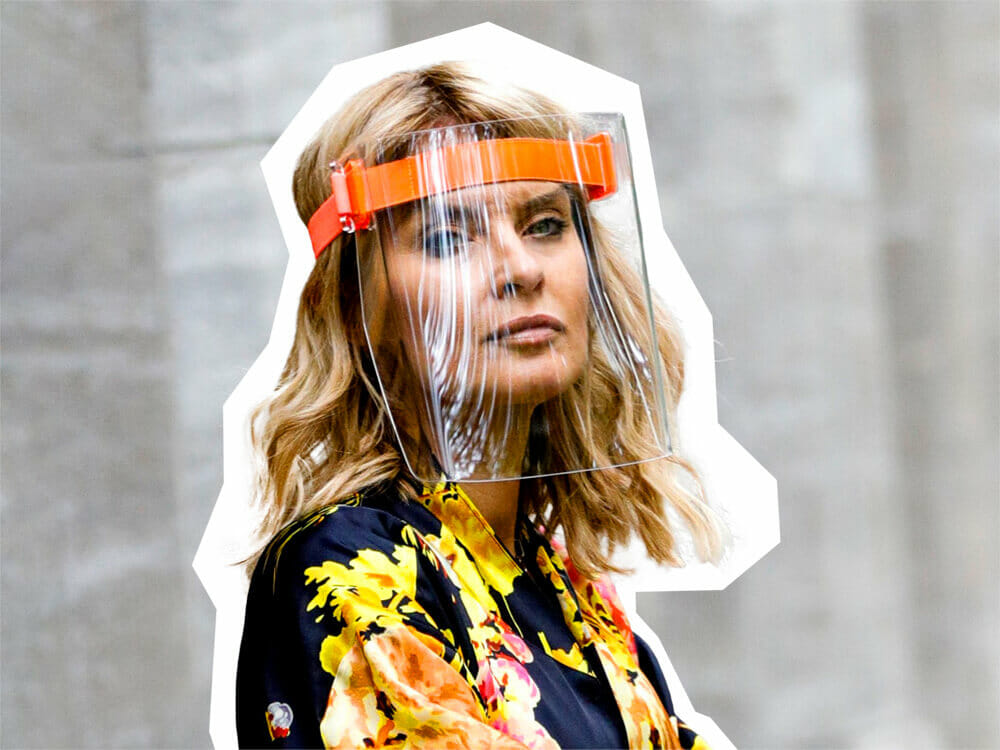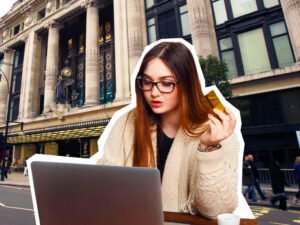Can 3d printed face shields solve the PPE shortage problem?
Well, it seems like the ‘Do It Yourself’ 3D printing creatives community and volunteers stepped up to the COVID-19 challenge.
Apple CEO Tim Cook announced – in early April – that his company would produce tens of millions of face shields for California health care workers.
Apple is dedicated to supporting the worldwide response to COVID-19. We’ve now sourced over 20M masks through our supply chain. Our design, engineering, operations and packaging teams are also working with suppliers to design, produce and ship face shields for medical workers. pic.twitter.com/3xRqNgMThX
— Tim Cook (@tim_cook) April 5, 2020
Interestingly enough, Apple’s website features now a tutorial for assembling the promised face masks.
In the Pacific Northwest, Nike, which has its headquarters just outside Portland, has repurposed materials and manufacturing processes for its running shoes to produce face shields, too.
Countless other companies, from Jeff Bezos-funded rocket outfit Blue Origin to Alphabet’s life sciences division Verily, are putting resources toward emergency face shield production.
The efforts aren’t stopping at just shields but extending to face masks and even ventilators, too.
Razer, the gaming accessory maker, even built its automated face mask production line in Singapore, equipped with vending machines for dispensing them around the city-state.
However, the US continues to struggle to respond to the COVID-19 pandemic, both at a state and federal level, DIY efforts from academics, hobbyists, manufacturing experts, are critical.
Some of these initiatives are highly organised, involving partnerships across state lines to source materials and make use of industrial-grade manufacturing facilities.
Yet almost all began in the living rooms of people with access to commercial 3D printers and the ingenuity to put together stopgap measures as existing supply lines struggled to keep up.
3D Printed Face Shields – Solution To The PPE Shortage
On March 20th, as the coronavirus situation in New York City hurtled toward full-blown crisis, Madiha Choksi was packing a taxi with two Flashforge 3D printers and as much filament as she could fit.
Choksi, a librarian specialising in research and educational technology, had received an urgent email the night before from Pierre Elias, a cardiology fellow at NYP-Columbia University Medical Centre.
Elias desperately needed to produce more protective gear for hospital workers treating COVID-19 patients.
He hoped Choksi, the administrator for Columbia University’s 3D printing lab, might be able to help.
“The email was very long and concerning,” said Choksi.
“But I don’t have any printers,” she remembers thinking,
“and we were already on day three or four of remote work.“
Thankfully, Columbia handed over its printers and Choksi got to work in her apartment producing prototype 3d printed face shields.
She modified an open-source design from Budmen Industries, by 3D printing the plastic visor that holds the shield and rests on the forehead.
She used supplies purchased from Staples to slap together about six units she then handed off to Elias a day after receiving the email from the doctor.
“He took them straight to the hospital and tested them out,” she says,
“and he came back and said, ‘Can we have 1,000 more?“
Face shields are rarely used in standard medical environments outside surgeries which is also why we’ve been in short supply.
Moreover, shields are only made by a limited number of manufacturers, some domestic but many overseas.
“One way people get infected is by touching surfaces and then touching the face or mask. The face shield acts as a reminder you shouldn’t touch your eyes and shouldn’t touch your mouth,” Hudspeth explains.
A 3d printed face shield of the DIY variety typically consists of a printed plastic semi-circle visor, sometimes called a bracket, that is often attached by glue to a piece of foam that rests on the forehead.
The unit then attaches to a long sheet of transparent plastic film that sits just above the face.
Everything is held together with a rubber band or a similar elastic device. It’s a simple way to protect someone’s face when interacting with a potentially COVID-positive patient.
These 3d printed face shields can be cheaply manufactured, easily sanitised, and then reused.
Commercial 3D Printers
They also aren’t as complicated or bound by regulatory restrictions as, say, respiratory face masks.
The lack of regulations surrounding face shields has made them an attractive option for manufacturers large and small looking for a way to pitch in.
“The nice thing about shields is that they’re easy to produce relatively quickly,” Hudspeth says.
“People who have larger commercial 3D printers and a relatively basic piece of plastic that is flexible enough to bend can make a face shield.“
Nearly two months after she’d received that first, frantic email, Choksi and her fellow Columbia University librarians Alex Gil and Moacir P. de Sá Pereira now run a DIY volunteer effort called COVID Maker Response.
So far, the group has assembled more than 19,000 3d printed face shields and distributed units to over 50 institutions, including hospitals, clinics, fire departments, and other groups of first responders.
They have two official manufacturing partners: 3D printing design firm Tangible Creative, out of Newark, New Jersey, and Brooklyn-based commercial 3D printers creator MakerBot.
Both firms supply the single 3D-printed visor to which the shield attaches.
After receiving the parts in large batches, Choksi has a group of 10 to 12 volunteers, mostly medical students, on four-hour shifts assembling the shields and ferrying them by taxi or car to hospitals.
Gil and de Sá Pereira, both data librarians and scholars, specialising in areas like data visualisation and digital mapping, have experience in rapid crisis response through their academic careers.
Now, Gil handles incoming face shield requests and spends all day in communication with hospitals.
And de Sá Pereira is helping manage the operation’s resources and ensuring they’re using Columbia’s funding as efficiently as possible.
The rest of their limited free time is spent helping other groups in the US and overseas start their DIY operations.
“When this whole thing hit, first and foremost in most of our minds was the lack of PPE, which was pretty harrowing in those early days,” says Jason Hill, an emergency room doctor at the Columbia University Irving Medical Centre.
“In particular, I had a pretty crazy overnight very early on where I had to intubate,” he says, referring to the insertion of a tube into the body, in the middle of the night without one of the face shields.
“It was early on, and nobody was expecting the onslaught to be that intense at the time, and we burned through our entire stash during the day.“
Uptown at the Harlem Hospital Centre, Stephen Nicholas, a doctor who came out of retirement to help treat patients during COVID-19, watched as the PPE shortage was fast becoming a crisis of its own.
“I cannot tell you how horrible it was,” he says of the situation in late March.
His hospital began using a special emergency code, “777 Gold,” over the loudspeaker when a COVID-19 patient had entered respiratory arrest and needed staff attention immediately.
The “gold” was to tell hospital workers to wear appropriate PPE due to the heightened risk of infection, but the building was burning through its stash of face masks at an alarming rate.
| Most-Read Articles |
Nicholas, a former professor at Columbia, heard about Choksi’s efforts through his daughter, a medical student at the school.
Gil began helping the doctor coordinate face shield deliveries for his colleagues.
“After the first distribution, they were all gone instantly,” Nicholas says.
“The second batch was 200. I was out of those in a day and a half. Next was 500, and that lasted about two days.“
He says the PPE shortage is no longer as much an issue now that most workers have their shields they can sanitise and hold onto.
Hill, the ER doctor, also found his way to Choksi’s group through word of mouth.
He says, as the crisis accelerated, every doctor became acutely aware that acquiring more PPE as fast as possible would be crucial to keeping health care workers safe.
COVID Maker Response
COVID Maker Response is now helping supply his hospital with hundreds of these shields every week.
“Every few days, I’ll gauge the needs for our particular ERs and ICUs with some colleges, and we’ll swing by and get a box of 200 or so of these face shields to drop off,” he says.
“When I walk through the ER, the vast majority of people I see are wearing these face shields. At this point, it feels like we have a surplus, which is a wonderful thing to feel.“
COVID Maker Response is far from the only operation like this. Choksi and Gil tell me they’ve been in contact with at least three others around New York City alone, and they continue to field messages from others around the country and even overseas that are interested in doing the same.
Countless groups have also spun up elsewhere in the US, typically around schools and libraries with space and resources to set up these makeshift factories.
Some, like the Washington State 3D Face Shield Hub and the Illinois PPE Network, have taken similar approaches to coordinate massive, factory-like volunteer efforts that employ individuals in their homes to corporate partners and universities.
“Part of our model is not to become the one supplier of face shields,” says Gil.
“The idea of this grassroots, distributed model is to help others be able to do what you’re doing so many more distributed teams can aggregate to some impact.“
One hurdle facing the PPE-producing projects is knowing when to shut them down, as more conventional manufacturing methods continue to ramp up.
Choksi and Gil say they’re still receiving daily requests for more face shields, and shortages will continue so long as the novel coronavirus continues to overwhelm the US healthcare system and its hospital and other frontline workers.
“I think we’re just going to keep going until the need dies down,” Choksi says.
“There are so many other efforts we hear about, and until we stop receiving requests, we plan to keep at it. Full speed ahead until the needs are met.“
For Choksi and her partners at COVID Maker Response, the willingness for her volunteers and partners to keep helping has been one of the few glimmers of light in an otherwise awful and often grim situation.
She says, the maker community and 3D printing, in general, have shown that they can fill gaps and help vulnerable communities in times of need, using their expertise and ingenuity.
“I think the situation has shown what commercial 3D printers are capable of, which is not long-term mass production but filling a need for very rapid production, on-demand and highly customised items,” says Dave Veisz, MakerBot’s vice president of engineering.
“[COVID-19] has just shown the vulnerability in the global supply chain.“
Veisz says that under normal circumstances, you would ‘inject’ the face shield design, and have a factory mass produce it.
“But these things take months,” he says.
“It’s been eye-opening to the general public that commercial 3D printers can be used for emergency needs like this“
Choksi says the novel coronavirus has been the kind of situation the maker community prides itself on coming together to fight.
“It’s very organised and mobilised and fast-moving and constantly iterating. If there is an emergency, a need for crisis response, there is a file out there that is open source, readily available for everyone,” she says.
“We’re just humbled and grateful to put our wits and expertise to it and just go.“
WTVOX – ‘Voicing the Future of Fashion’
For more similar content and lightning-quick updates delivered directly to your inbox subscribe to our weekly newsletter.
For daily news in sustainable fashion, innovation, conscious beauty and lifestyle follow us on social media: Instagram, LinkedIn, Facebook, Twitter.
Finally, if you want to interact with thousands like you, join your tribe on the Future of Fashion Group.
A decade of fashion; here’s to the next one.The past decade has been turbulent – and defining – for fashion: child labour, climate crisis, gender inequality, animal cruelty, and reckless plastic pollution, just to name a few. With the COVID-19 pandemic, the beginning of this decade does not look too good either. That’s why finding media that reports with rigour and integrity at heart is difficult in critical times. Finding media that informs all, regardless of where they live or if they can afford to pay, is even harder. In these times, independent fashion media magazines are increasingly silenced by commercial ownership and social media misinformation. So far, your unceasing support has allowed us to keep delivering trustworthy, relevant, high-quality content. Your support allowed us to uphold our editorial independence and ensure honest journalism, free from commercial ownership or political bias. We are deeply grateful for your generosity and continue to count on your support. Thank you. |





